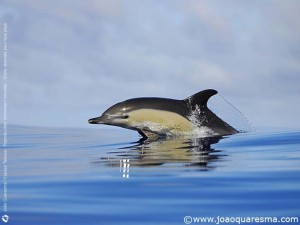Background noise often interferes with an organisms ability to reduce uncertainty based on acoustic cues and signals, as it makes it more difficult for the organism to separate out valuable information from the ambient noise. In the ocean, background noise is especially important both because of the properties of sound propagation in water and because marine mammals such as dolphins strongly rely on acoustics for navigation, hunting and communication. Dolphins experience an ever changing environment of ambient noise, from sources such as wind, waves, precipitation, seismic processes, thermal events, biological and anthropogenic activities. The levels of anthropogenic noise caused by offshore activities and activity from developed coastal areas is cause for concern as it could affect the ability of a dolphin to interpret its environment and make decisions. While their auditory systems have evolved to deal with small fluctuations in natural noise levels, the larger fluctuations in anthropogenic noise have the potential to negatively impact social interactions and hunting efficiency.
In order to compensate for high noise levels that span many frequencies, dolphins may alter vocalizations to overcome the masking noise. However, changes in acoustical behavior could be costly, because of possible increases in energy expenditure, loss of original strategic information or increased risk of predation. This study sought to investigate the temporary, short-term consequences of noise levels on the acoustic structure of dolphin’s whistles in terms of frequency parameters for three dolphin species. The authors predicted that the dolphins would “enact different strategies to compensate for natural ambient noise, depending on the species-specific features of their whistles and local characteristics of noise.” Alternate predictions are that no compensation would occur, or the various dolphin species would adopt a common strategy, giving rise to convergent shifts in frequency parameters.
To go about this investigation, the researchers recorded environmental background noise and whistles of short-beaked common, Atlantic spotted- and striped-dolphins in the Canaries archipelago. The results show that dolphins all three species of dolphins modified the acoustic structure of their whistles in response to increasing levels of environmental background noise when the background noise was within the frequency bands of the dolphins social communication. The dolphins adopted a “noise-induced vocal compensation,” resulting in species-specific frequency shifts in what seems to be a compensatory strategy to maintain threshold levels favorable for communication.
The Atlantic spotted dolphins and short-beaked common dolphins increased the maximum frequency of their whistles in the presence of high noise levels whereas the striped dolphin increased the minimum frequency of its whistle. In both cases, the altered acoustic parameter is that with the lowest within species variability, suggesting that the dolphins could be altering species-specific features of their whistles in response to pressures originating from environmental noise.
The authors found that the masking compensation process results from a balance between background noise intensity and constraints imposed on the features of the whistles, with chosen frequency bands minimizing noise at other frequencies. Therefore, dolphin communication is not only adaptive but can be actively modified to cope with noisy environments, although more work needs to be done looking into the biological significance of whistle variability and the costs that this could incur.
http://cetus.ucsd.edu/voicesinthesea_org/videos/videoBottlenoseAcous.html
References:
Papale E, Gamba M, Perez-Gil M, Martin VM, Giacoma C (2015) Dolphins Adjust Species-Specific Frequency Parameters to Compensate for Increasing Background Noise. PLoS ONE 10(4): e0121711. doi:10.1371/journal.pone.0121711

